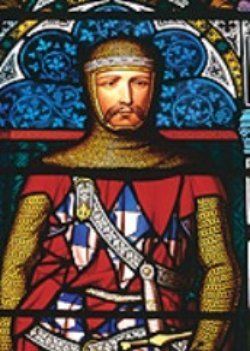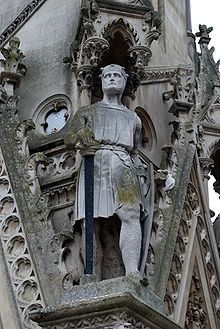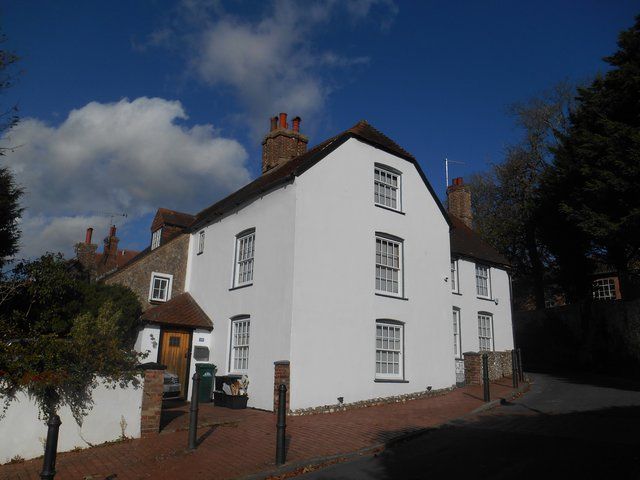13th Century Portslade
13th Century
13th century Portslade Manor had one of its most fascinating and famous Lords, Hubert de Burgh (c.1170 – 1243). He was one of the most influential men in England during the reigns of King John and King Henry III, until he lost the king’s favour in 1232. De Burgh had many adventures and was famously immortalised by Shakespeare in “The Life and Death of King John”.
In Shakespeare’s play, King John orders Hubert de Burgh to blind his 16-year-old nephew and rival to the English throne, Prince Arthur, to make him unfit to reign. However, de Burgh could not bring himself to carry out the dark deed, though told the King he had done so. In Shakespeare’s play, Arthur dies jumping from a castle wall, possibly trying to escape, but it is generally believed that he was murdered by King John.
In 1215, the unpopular King John was forced by the English barons to sign the Magna Carter, a charter that limited the power of the king. Hubert de Burgh was named as the person who would act on the king's behalf if the king were out of the country. He was also declared Chief Justiciar of England, the equivalent to a modern-day Prime Minister. In 1217, De Burgh commanded the English fleet that defeated the French at the Battle of Sandwich. In 1227 he was created Earl of Kent.
De Burgh was captured in France in 1205 whilst defending Château Chinon for King John. It is probable that de Burgh’s patron, William de Warenne, (son of Rainald de Warenne*), helped secure his release in 1207 after which De Burgh married his daughter, Beatrice. They had a son, John de Burgh.
Beatrice died in 1214 and in 1217 de Burgh married Isabelle, Duchess of Gloucester, the divorced wife of the late King John (who had died in 1216). Isabelle died soon after their marriage and it appears that Portslade Manor was given to Hubert de Burgh during this time. De Burgh married for a third time in 1221 to Margaret, sister of Alexander, King of the Scots. They had a daughter, Margaret, to whom de Burgh gave Portslade Manor in 1226. Following her death in 1237, the manor passed to John de Burgh, the son of Hubert and Beatrice. Portslade Manor stayed mostly with the descendants of Hubert and Beatrice throughout the 13th century and in 1299 passed to their great-great grandson, Thomas de Grelle.
Hubert de Burgh’s grandson, John de Burgh II, fought for Simon de Montfort and the rebel barons at the Battle of Lewes in 1264, where Henry III and his son, Prince Edward, were captured. The Prince escaped and led an army which killed De Montfort in 1265 at the Battle of Evesham, after which he freed his father. Prince Edward succeeded to throne as Edward I in 1272.
St Nicolas Church was enlarged in the 13th century with the addition of the chancel and the upper part of the tower. Interestingly, part of the 16th century Kemps House kitchen floor is formed of a 13th century tombstone, which could mean that it was built on part of the old churchyard.
*Rainald’s property in Portslade became part of the ‘Honour of Wormegay’ (an area in Norfolk) , following his marriage to the heiress, Lady Alice de Wormegay.
Researched and written by Julie Ryan
Pictured:
1. The Magna Carta
2. Salisbury Cathedral
3. Hubert de Burgh
4. Simon de Montfort
5. Plan of St Nicolas Church
6. Kemps, Portslade
7. An English longbow
13th century events from across the country
1215 - Magna Carta signed
King of the 13th century
John 1199 - 1216
Henry III 1216 - 1272
Edward I 1272 - 1307
Lords of The Manor of Portslade
1217 - 1226 Hubert de Burgh.
1226 - 1241 Margaret de Burgh.
1232 - 1234 - held by The Crown in lieu of compensation
1241 - 1246 John de Burgh.
1246 - 1259 Margaret, Countess of Kent.
1280 - 1299 Hawise de Burgh
1299-1305 Thomas de Burgh










